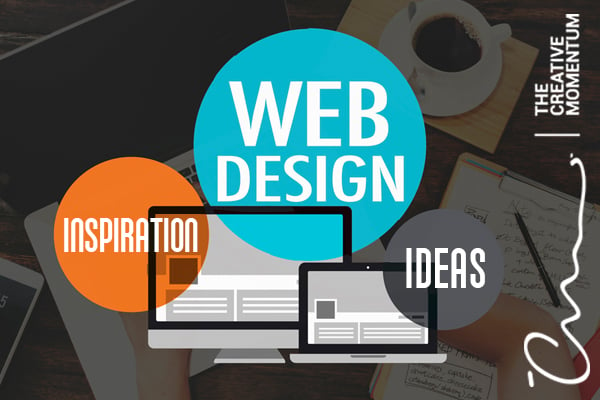Website Design London Ontario Focused on UX
Website Design London Ontario Focused on UX
Blog Article
Just How to Efficiently Incorporate Looks and Performance in Web Layout
When creating a website, you require to strike an equilibrium between aesthetic appeals and capability. It's not practically looking great; your layout needs to also offer an objective and guide users efficiently. By concentrating on simplicity and instinctive navigation, you can develop an engaging experience. However what components truly improve use while preserving aesthetic allure? Allow's discover the key principles that can result in a harmonious blend of elegance and function.
Comprehending the Relevance of Aesthetic Appeals and Capability
Understanding the equilibrium between looks and performance is important for producing an effective user experience when you make an internet site. A visually appealing website grabs interest, however it's the capability that maintains individuals engaged. Site visitors will rapidly lose rate of interest and leave.Consider your target audience and what attracts them in if your website looks terrific but is hard to browse. You wish to produce a style that reflects your brand while ensuring simplicity of use. Structured formats, intuitive navigation, and clear telephone calls to action can improve both visual appeals and capability.

Principles of Reliable Web Style
To create an effective website design, you require to stick to several vital concepts that boost both individual experience and visual charm. First, focus on simplicity; a clean layout assists customers browse easily. Use a consistent color design and typography to keep coherence throughout your site. This cultivates knowledge and trust.Next, ensure your design is receptive. Users access websites on numerous devices, so your design must adjust effortlessly. Take notice of visual pecking order; highlight crucial components with positioning, dimension, or color to guide individuals' focus.Finally, incorporate sufficient white area. It avoids clutter and makes material more absorbable. Keep in mind, reliable website design equilibriums looks and capability, so every style selection ought to offer a purpose. By following these concepts, you'll develop a site that's not only visually attractive however also easy to use, eventually maintaining visitors involved and encouraging them to return.
Prioritizing User Experience
When prioritizing customer experience, you'll wish to start by recognizing what your individuals genuinely require. Streamlining navigation design can make a significant distinction in how easily they find what they're looking for. Boosting aesthetic pecking order helps guide their interest to the most important components on your website.
Recognizing Individual Needs
Recognizing user requirements is necessary for producing an appealing web experience that keeps visitors coming back. To achieve this, you should recognize the goals and preferences of your target market. Start by conducting individual research study, like interviews or studies, to collect understandings on what users value most. Take note of their discomfort points and challenges when engaging with comparable sites. This information permits you to customize your style, making sure performance lines up with user assumptions. In addition, think about creating customer personas that stand for different segments of your target market, aiding you envision their needs throughout the design procedure. When you focus on comprehending user requirements, you produce a site that not just looks wonderful however also supplies a seamless, enjoyable experience that promotes commitment.
Simplifying Navigation Style

Enhancing Visual Hierarchy
A strong visual pecking order is crucial in directing users with your web site and guaranteeing they involve with key material. To accomplish this, utilize size, shade, and spacing tactically. Make vital elements like headings larger and bolder than body text, attracting attention promptly. Use contrasting shades to highlight phone call to action, motivating clicks. In addition, utilize ample white space to separate sections, making material absorbable and inviting.Consider the circulation of details; set up aspects rationally, leading customers' eyes from one point to the next. Use visual cues, like lines or arrows, to guide focus. By prioritizing visual power structure, you enhance customer experience and boost the chance of conversions, guaranteeing your internet site is both cosmetically pleasing and functionally reliable.
Color Concept and Its Effect On Usability
While choosing the ideal shades for your internet site might appear like a minor detail, it substantially affects functionality and user experience. Shade affects exactly how users regard information and can impede or improve navigation. Contrasting shades can help vital components stand out, making it simpler for site visitors to locate what they need.Additionally, consider the psychology of colors: blue often influences count on, while red develops urgency. Understanding your target market can lead your shade options, ensuring they resonate well.Moreover, consistent color design help build brand name identification, making your site extra remarkable. Nonetheless, be cautious-- as well lots of colors can bewilder users. Adhere to a minimal palette that matches your web content and maintains clarity.Incorporating accessibility is likewise necessary; confirm your shade combinations are friendly for those with visual impairments. By thoughtfully applying shade theory, you'll boost use and produce a much more interesting user experience.
Typography: Balancing Design and Readability
Shade choices established the phase for your web site, however typography plays a just as vital duty in improving user experience. You desire your text to interact plainly while also showing your brand's individuality. Start by selecting fonts that are not only attractive however likewise readable. Sans-serif fonts often work well for electronic screens, as they're easier to review at numerous sizes.Maintain a power structure by utilizing various font style sizes and weights; this guides individuals through your content easily. Consider line spacing and letter spacing; also tight can irritate viewers, while too loose can disrupt the flow. Limitation your typeface selections to two or 3 to maintain the style cohesive.Finally, always evaluate your typography throughout different gadgets and internet browsers. What looks excellent on one display may not on one more. Balancing design with readability guarantees that your message resonates, maintaining your audience involved and educated.
Receptive Design: Making Looks Service All Tools
To assure your website looks great on any device, you'll need to welcome receptive design concepts. This technique warranties your website adapts to numerous display sizes, giving an optimal user experience. Beginning by utilizing fluid grids and flexible pictures that scale flawlessly. As opposed to dealt with dimensions, go with percentages and family member units, enabling your format to change dynamically.Next, apply media questions in your CSS. These allow you apply various styles based on gadget characteristics, like screen width. In this manner, you can keep aesthetic charm while assuring functionality.Don' t ignore touch targets; make specific buttons and links are simple to tap on smaller sized displays. Focus on important content, so users can conveniently browse your website regardless of their gadget. By concentrating on these components, you'll develop an engaging, aesthetically appealing experience that fulfills the requirements of all users, whether they're on a desktop computer, smartphone, or tablet computer .
Conducting Functionality Screening for Constant Enhancement
To boost your internet design, you require to establish clear usability objectives that straighten with customer needs. By performing individual examinations, you can gather valuable responses on how real individuals interact with your website. Analyzing these outcomes will certainly help you make informed renovations and produce an extra reliable individual experience.
Defining Usability Goals
While aesthetic appeals can draw users in, specifying usability goals is important for ensuring their experience remains smooth and enjoyable. Beginning by identifying what you desire customers to accomplish on your site (website design london Ontario). Consider their tasks, actions, and demands. Are they searching for details, making an acquisition, or registering for a newsletter? Establish clear standards to determine success, like job conclusion rates or time on job. Prioritize intuitive navigating, accessible content, and responsive style to improve usability. Consistently revisit these goals as user expectations progress. By defining usability objectives, you create a framework for examining and boosting your internet site's performance. This focus on functionality not only boosts user contentment however additionally strengthens the overall performance of your layout
Conducting Customer Examinations
Performing customer tests is vital for refining your web site and ensuring it satisfies your audience's needs. Start by identifying your target individuals and producing a test strategy that describes your objectives. Utilize a mix of measurable and qualitative methods, such as surveys, interviews, and task-based observations, to collect comprehensive comments. Invite participants to browse your site while you observe their communications and note any type of problems they encounter. Motivate open dialogue to record their ideas and sensations regarding the design and performance. Keep sessions brief and concentrated, ensuring you cover key locations without overwhelming customers. Finally, make sure to document all findings, as this information will be important for making educated layout decisions that improve both visual appeals and use.
Evaluating Examination Results
Exactly how can you successfully evaluate the outcomes of your usability tests to drive continuous enhancement? Begin by classifying feedback into usual motifs. Seek patterns in user habits that highlight pain factors or areas for improvement. Use quantitative information, like job conclusion prices and time on task, to measure usability objectively. Do not neglect to think about qualitative insights from individual remarks; they often disclose underlying issues that numbers can't reveal. Focus on the most impactful findings and create workable things for your layout group. Bear in mind, it's concerning iterating-- implement changes, after that examination again. This cycle of testing, examining, more info and refining aids you balance visual appeals and functionality, guaranteeing your website fulfills customer demands efficiently while preserving aesthetic allure.
Often Asked Inquiries
Exactly how Do I Pick the Right Shade Combination for My Website?
To select the ideal shade palette for your web site, consider your brand's personality, target audience, and emotional effect (website design london Ontario). Use shade psychology, create harmony, and guarantee readability. Test combinations to see what resonates ideal with site visitors
What Tools Can Assist With Web Design Visual Appeals and Performance?
You can make use of devices like Adobe XD, Figma, and Lay out to boost your website design's aesthetic appeals and capability. These systems provide intuitive interfaces, collaboration attributes, and pre-made themes to improve your imaginative process and boost your designs.
Exactly How Can I Incorporate Animations Without Jeopardizing Functionality?
To incorporate animations without compromising capability, focus on subtle effects that boost customer experience. Usage CSS computer animations for smoother interactions, assurance fast tons times, and test on numerous tools to preserve performance while including visual charm.
What Are Usual Blunders to Prevent in Web Layout Aesthetics?
When making, avoid messy formats, bad shade selections, and irregular font styles. Don't neglect mobile responsiveness, as it can estrange customers. Verify your style straightens with your brand name, developing a seamless experience that engages site visitors successfully.
How Usually Should I Update My Website's Layout for Optimum Visual Appeals?
You must update your internet site's style every 1-2 years to maintain up with patterns and preserve perfect appearances. Consistently restoring visuals helps engage visitors and warranties your website stays straightforward and attractive. When you make an internet site, understanding the equilibrium in between aesthetics and capability is important for producing a reliable user experience. To develop an efficient web style, you need to adhere to numerous essential principles that boost both customer experience and visual allure. Users access internet sites on numerous tools, so your design should adapt perfectly. When prioritizing user experience, you'll want to start by recognizing what your individuals truly require. Beginning by carrying out individual research study, like interviews or surveys, to gather insights on what customers worth most.
Report this page